What to Do in Barcelona beyond the usual tourist trail? While Gaudí’s masterpieces and sun-drenched beaches steal the spotlight, the real soul of this Catalan capital is found in places most tourists overlook. From quiet local neighborhoods to hidden viewpoints and offbeat cultural corners, this guide reveals 25 unforgettable things to do in Barcelona that only locals and curious explorers know. Whether it’s your first visit or your fifth, these gems will make your trip truly unique. And with a Gohub eSIM, you’ll stay connected as you uncover each hidden treasure—no roaming, no SIM swaps, just seamless travel..
Barcelona is a fountain of courtesy, shelter of strangers, hospice to the poor, land of the valiant, avenger of the offended, reciprocator of firm friendships, a city unique in its location and beauty
Don Quixote by Miguel de Cervantes
Discover Hidden Neighborhoods That Locals Love
You’ve seen the Sagrada Família. You’ve strolled down La Rambla. Now you’re wondering: what to do in Barcelona that actually feels authentic?
Well, let me take you beyond the guidebooks.
Barcelona’s charm lives in its local neighborhoods—the ones with no queues, no tour buses, and no overpriced sangria. Here’s where I wandered, got lost (intentionally), and found the kind of places that make you feel the city.
Let’s start with two of my favorite spots
Gràcia: Barcelona’s Bohemian Village Within the City
Gràcia feels like Barcelona’s artsy, slow-living cousin. A former independent town, this district still holds onto its small-town soul—with a few surprises:
- Laid-back plazas like Plaça del Sol or Plaça de la Virreina are where locals gather after work with vermut and tapas.
- Festa Major de Gràcia (mid-August) transforms the streets with handmade decorations and block parties—each street competes to out-decorate the others.
- Local artists and indie shops line the smaller streets, far from the big-brand buzz.
Insider Tip: Visit around sunset to see the plazas come alive—and don’t forget your Gohub eSIM to share the vibes instantly.
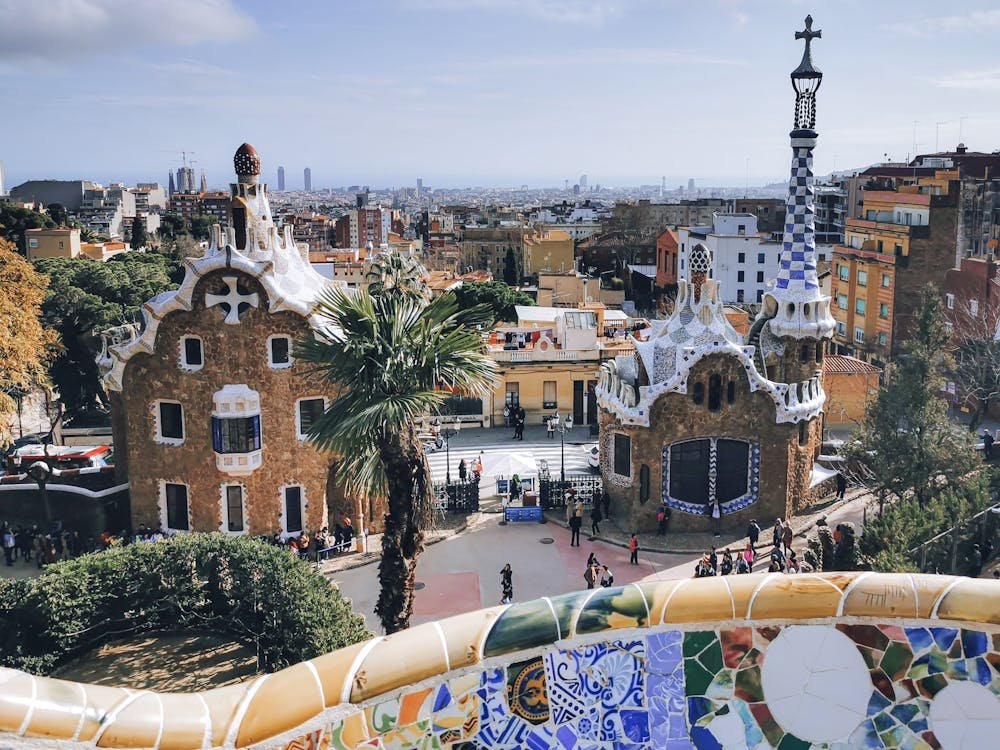
Image: Gràcia – Barcelona’s Bohemian Village
El Born – Medieval Cool with a Creative Twist
If the Gothic Quarter is the historic center, El Born is its stylish, younger sibling. It blends cobblestone charm with a modern edge:
- Santa Maria del Mar, the iconic 14th-century church, stands proudly among boutiques and cocktail bars.
- El Born Cultural Centre offers a glimpse into Barcelona’s past—preserving ruins from the 1714 siege beneath a stunning iron structure.
- Quiet alleyways hide unique cafes, artisan studios, and Instagram-worthy corners you won’t find on TikTok just yet.
💡 Local Note: Skip the Gothic Quarter crowds—El Born is calmer, cooler, and still packed with stories.
Stay connected while you explore. With a Gohub eSIM, you’ll have instant data to check maps, book restaurants, or look up Catalan phrases on the go—no roaming fees, no stress.
Poblenou – From Industrial Ghost Town to Barcelona’s Creative Playground
Still wondering what to do in Barcelona that doesn’t involve elbowing through tourist crowds? Let me tell you about Poblenou—a district where old factories meet new ideas, and every corner feels like a work-in-progress (in the best way).
It used to be smokestacks and textile mills. Now? It’s a haven for artists, freelancers, and tech startups looking for space to breathe (and maybe set up a co-working café).
Here’s why Poblenou is worth your steps:
- Converted warehouses now host creative agencies, art studios, and hidden coffee shops.
- Street art hotspots around Carrer de Pujades and Carrer de Pere IV showcase murals that change with the seasons—some from world-renowned artists.
- Rambla del Poblenou, the leafy main boulevard, is full of local eateries, bookstores, and ice cream shops. No tacky souvenir stands here.
- At the end of the Rambla? A peaceful stretch of uncrowded beach where locals actually hang out.
Pro Tip: Bring your camera and your curiosity—but not your tight schedule. This is the kind of neighborhood that rewards wandering.
Need directions mid-walk? Or want to tag that mural artist on Instagram? With a Gohub eSIM, you’ll have instant internet without roaming drama.
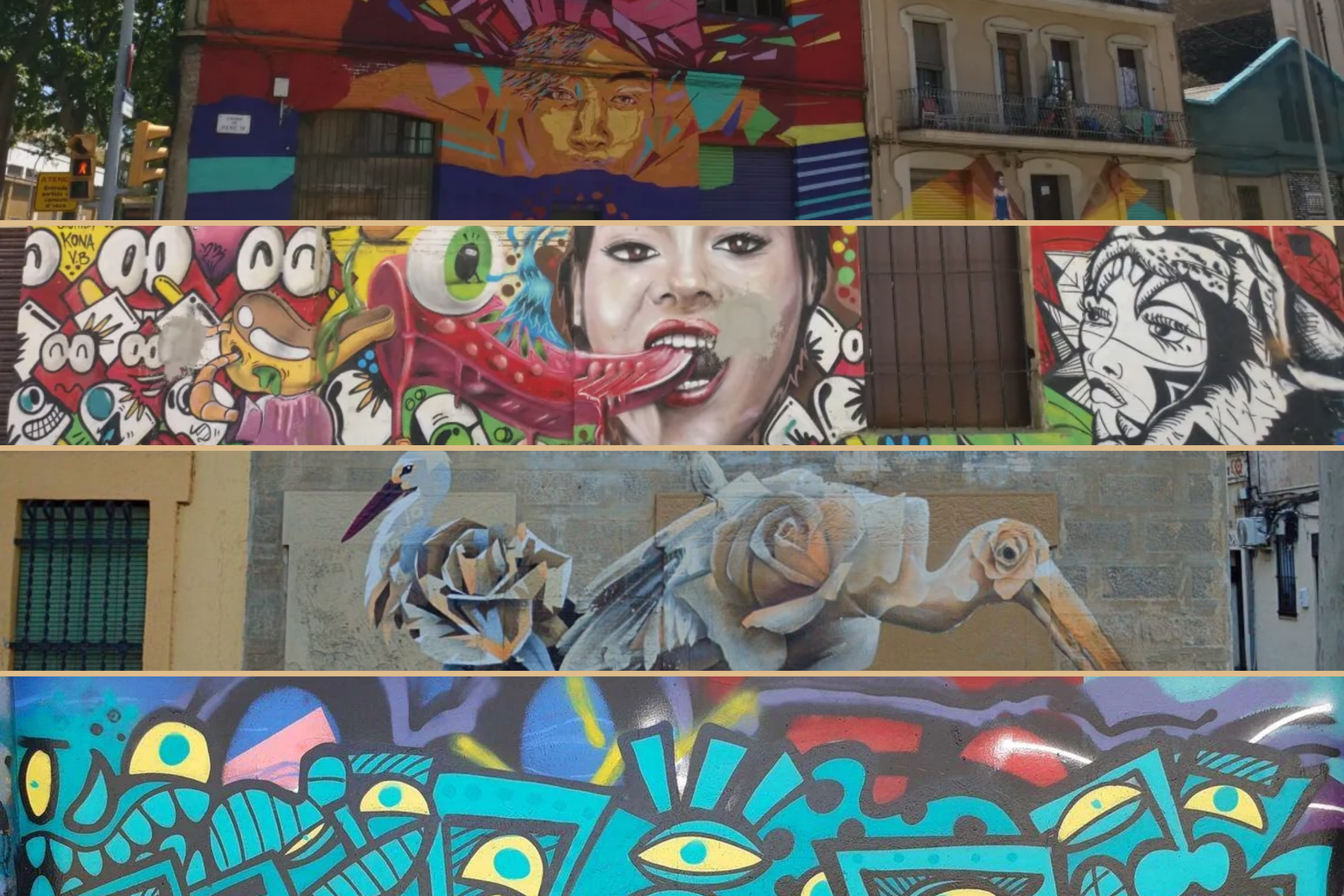
Image: Street art mural in Poblenou with industrial building background
Secret Viewpoints and Peaceful Green Escapes
Let’s be real—Barcelona’s energy is amazing, but sometimes… you just want to breathe. Escape the crowds. Catch a view. Or walk a path where your only company is chirping birds and a sea breeze.
Here are three hidden outdoor gems for those chill, soul-recharging moments
Bunkers del Carmel: Barcelona’s Ultimate Panoramic Vista
High above the city on Turó de la Rovira, these old wartime bunkers have become the go-to spot for locals chasing sky-high views (and good vibes).
Why go?
- Best panoramic view in Barcelona—you’ll see from the Sagrada Família to the sea.
- Locals bring snacks and cava to watch the sunset. It’s casual, magical, and very un-touristy.
- Built during the Spanish Civil War, these bunkers carry historic weight and unbeatable sightlines.
Pro Tip: Bring your own water, wear comfy shoes (it’s uphill), and pack a sunset picnic.
Need maps or to check when golden hour starts? Grab your Gohub eSIM before you hike up—no roaming, full signal even on the hill!
Parc del Laberint d’Horta – The Maze Garden of Barcelona
If you’re looking for a hidden corner of calm, this 18th-century garden is it. It’s like stepping into a fairytale—minus the crowds.
- Historic hedge maze (yes, a real one!) surrounded by romantic statues and fountains.
- Once belonged to aristocrats—now it’s open to the quiet-seeking public.
- Perfect for a relaxed stroll, a quiet moment, or IG photos with major Bridgerton vibes.
Budget Tip: Free entry on Wednesdays and Sundays.
Go early to have the whole maze almost to yourself.
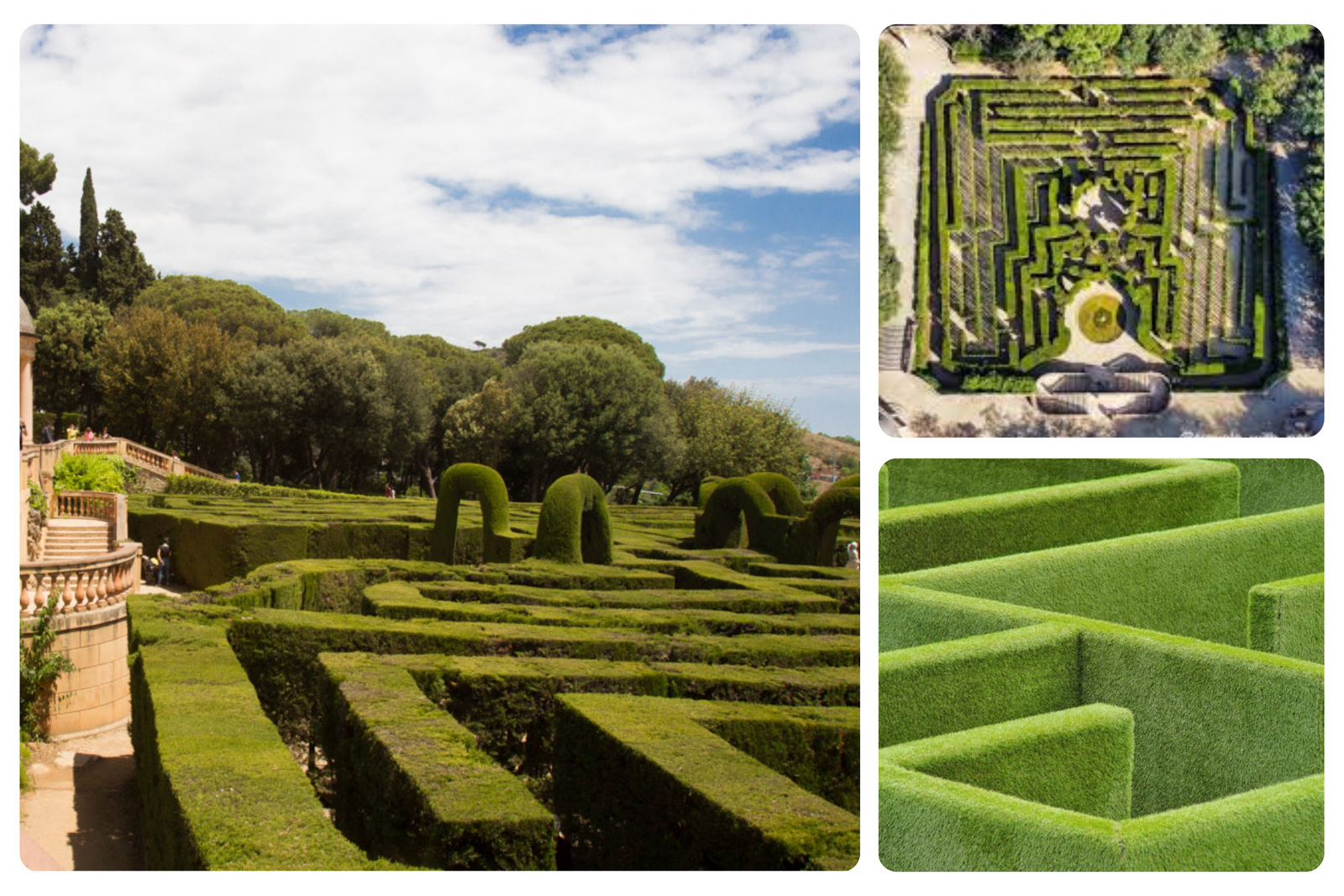
Image: Hedge maze at Parc del Laberint d’Horta with neoclassical architecture
Carretera de les Aigües: The Locals’ Favorite Walking Path
Ten kilometers. Zero stress. All views. This scenic dirt trail on Collserola mountain is the ultimate “I-need-nature-but-not-too-far” escape.
- Surrounded by Mediterranean pine and oak forest
- Cooler than the city, especially in summer
- Loved by runners, walkers, and locals avoiding the gym
📸 Photo Tip: Arrive late afternoon—watch the city glow gold as the sun dips. Perfect golden hour backdrop Love cities with personality? Check out the street art scene in Berlin — another must-see stop for creative souls and colorful alleys.
Lesser-Known Gaudí and Modernist Treasures
Okay, let’s skip the obvious. We all love Park Güell and the Sagrada Família—but if you’re after the hidden Gaudí, the quietly mind-blowing kind, here’s where bé went exploring, camera in one hand and vermut in the other.
Let’s uncover some of Barcelona’s modernist treasures most tourists miss
Bellesguard – Gaudí’s Secret Castle on a Hill
This one? Practically a hidden boss level for Gaudí fans.
- Looks like a medieval fortress, feels like a Gaudí fairy tale.
- Unlike his curvy designs, Bellesguard features straight lines—a rare shift that shows his respect for the historical ruins it was built on.
- Don’t miss the rooftop mosaic dragon and the sweeping city views (yes, they live up to the name “Bellesguard” = “beautiful view”).
Quick History: This site once belonged to King Martin I of the Crown of Aragon. Gaudí preserved its regal spirit while adding his own flair.
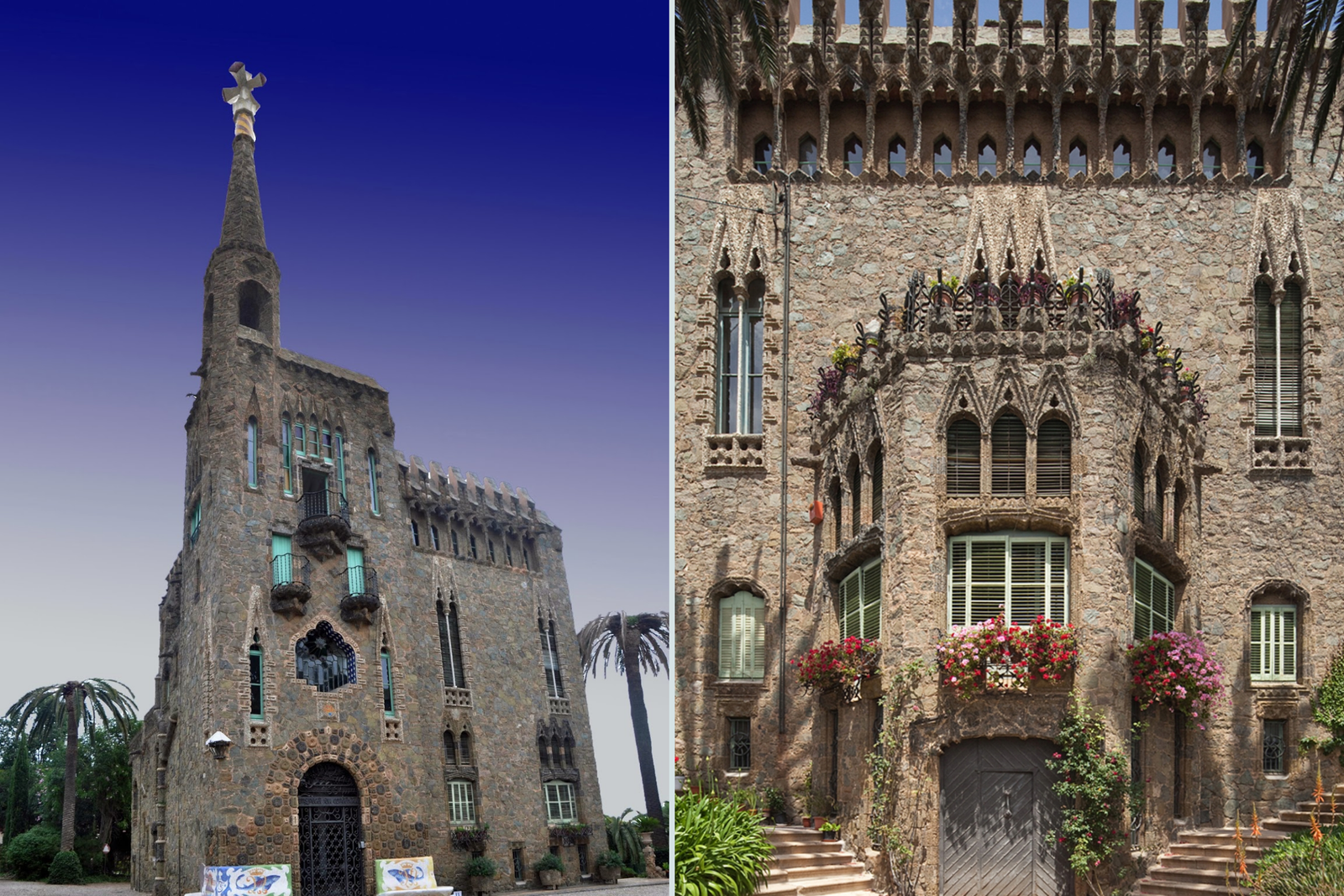
Image: Bellesguard Tower
Casa Vicens – The Colorful Start of a Legend
Before the tourists came… before the fame… there was Casa Vicens.
- Gaudí’s first major project, designed in the 1880s as a summer house.
- Decorated with palmetto leaves, Moorish tiles, and ironwork inspired by nature.
- Every corner pops with color—think Andalusian garden meets Catalan boldness.
Nerdy Note: The house wasn’t open to the public until 2017. That means it still feels fresh and untrampled.
Need tickets or directions? Yep—your Gohub eSIM will come in handy here, especially when navigating smaller attractions that don’t always show up on mainstream apps.
Plaça Reial Lampposts – Blink and You’ll Miss Gaudí’s First Public Work
You’ve probably walked right past them.
In the center of Plaça Reial, you’ll find two ornate lampposts designed by a very young Antoni Gaudí.
- Features winged helmets of Mercury, Roman god of commerce
- Set in a regal 19th-century square with fountains, palm trees, and arcaded cafés
- There’s even a tiny plaque identifying Gaudí as the designer—total treasure-hunt vibes
🌆 Urban Explorer Tip: Come here in the late afternoon when the light hits just right. Snap a pic of the lampposts—and then enjoy a drink under the arcades like a local.
Unique Museums Beyond the Tourist Circuit
Let’s be real: after your third Gaudí building and second art museum, your brain might start whispering… “let’s see something weird.” 😅
If you’re searching for what to do in Barcelona that’s truly unexpected, these quirky, low-key museums offer stories you won’t hear in most guidebooks—but absolutely should.
Funeral Carriage Museum – Where Death Rides in Style
Tucked inside Montjuïc Cemetery, this museum feels straight out of a Tim Burton dream. It’s dark, yes—but also strangely elegant.
- Features ornate horse-drawn hearses from the 1800s and early 1900s
- Each carriage is decked out with symbolic carvings and velvet-draped drama
- Learn how wealthy families used funerals to show status, not just grief
Cultural Deep Dive: Back then, your final ride wasn’t just functional—it was a statement. This museum is a quiet, moving window into that world.
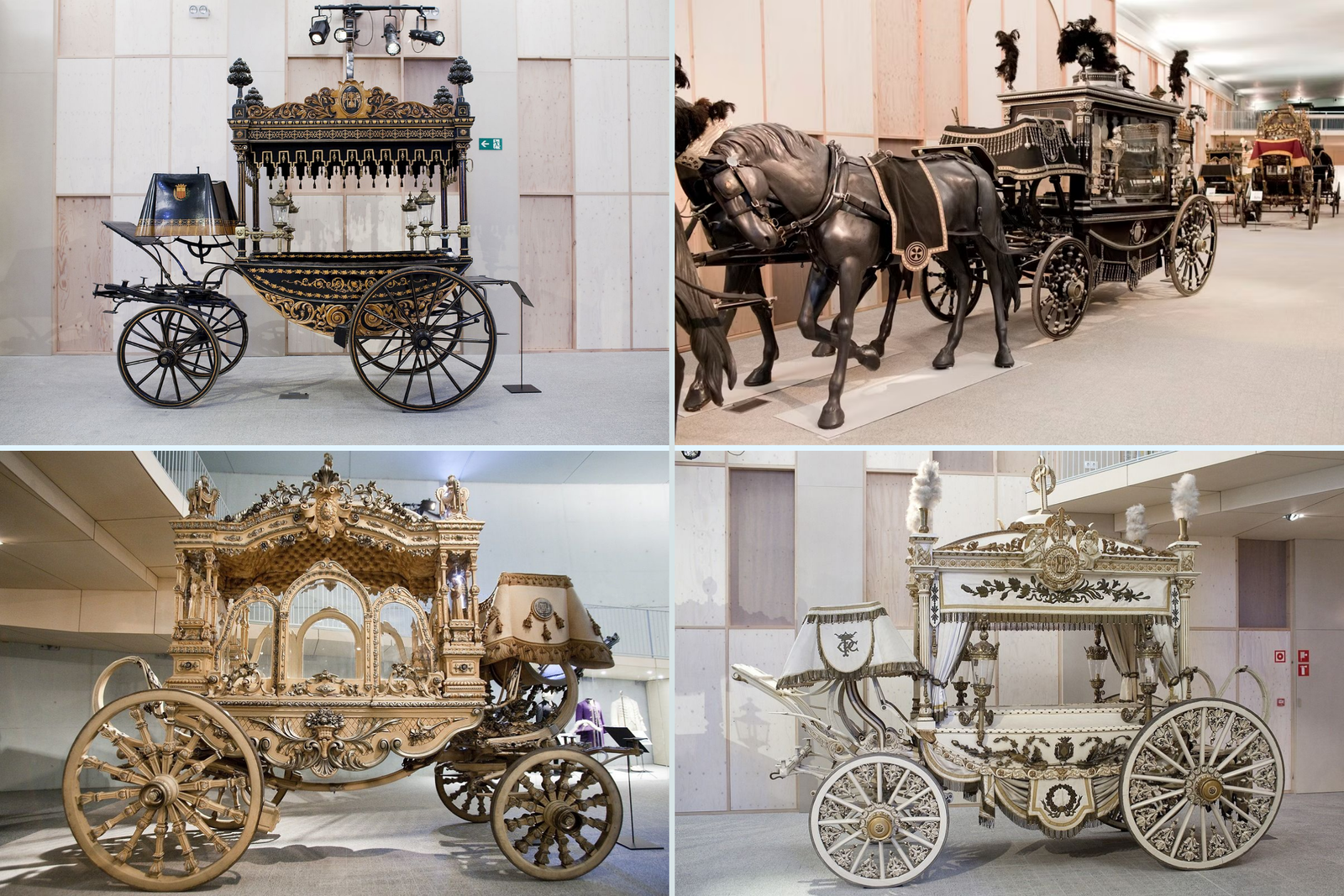
Image: Ornate funeral carriage with black decorations at the Funeral Carriage Museum
Barcelona Sewers Museum – A Journey Beneath the Streets
This isn’t a metaphor. You’re literally going underground into Barcelona’s historic sewer tunnels. And yes—it’s way more fascinating than it sounds.
- Explore real 19th-century sewer infrastructure
- Hear stories about the workers who built and cleaned the tunnels
- Learn how this network transformed public health in the city
Practical Tip: It’s dark, damp, and narrow down there—so book in advance and wear closed-toe shoes. Also… maybe skip perfume that day.
Bonus: Gohub eSIM = full signal when you emerge, so you can Google “how to disinfect sneakers after sewer tour”
Chocolate Museum – For Sweet Tooths and Culture Buffs
Honestly, this place smells better than most art galleries—and yes, your entry ticket is an actual chocolate bar
- Learn how chocolate came to Spain from the Americas in the 1500s
- See vintage chocolate-making tools, ads, and edible sculptures
- Family-friendly workshops where you can make your own chocolate treats
Local Tip: Head to the gift shop at the end—it sells top-tier local artisan chocolate (perfect gifts, if they make it home untouched).
Chocolate pics, workshop videos, and directions to the nearest gelato? You guessed it—your Gohub eSIM keeps the sugar content and your connection high.
Real Local Experiences in Barcelona (That Most Tourists Miss)
Sure, you can snap selfies at the Sagrada, but to really feel Barcelona? You’ve got to do what the locals do. These are the soulful little rituals and creative moments that made bé fall in love with this city—and they might just do the same for you
“Fer el Vermut” – A Slow Weekend Ritual That Locals Love
If you’re asking what to do in Barcelona around midday on a weekend, the answer is simple: do vermut.
- “Fer el vermut” means sipping sweet, herbal vermouth with a side of chips, olives, or seafood snacks before lunch.
- Classic vermouth bars are full of vintage vibes—check for barrels behind the bar and handwritten chalk menus.
- Typically served over ice with a slice of orange and a splash of soda.
Pro Tip: Head to Gràcia or Sant Antoni neighborhoods around 12–1 PM for peak local energy.
Use your Gohub eSIM to search for hidden bodegas with 4.9 stars and no tourists in sight
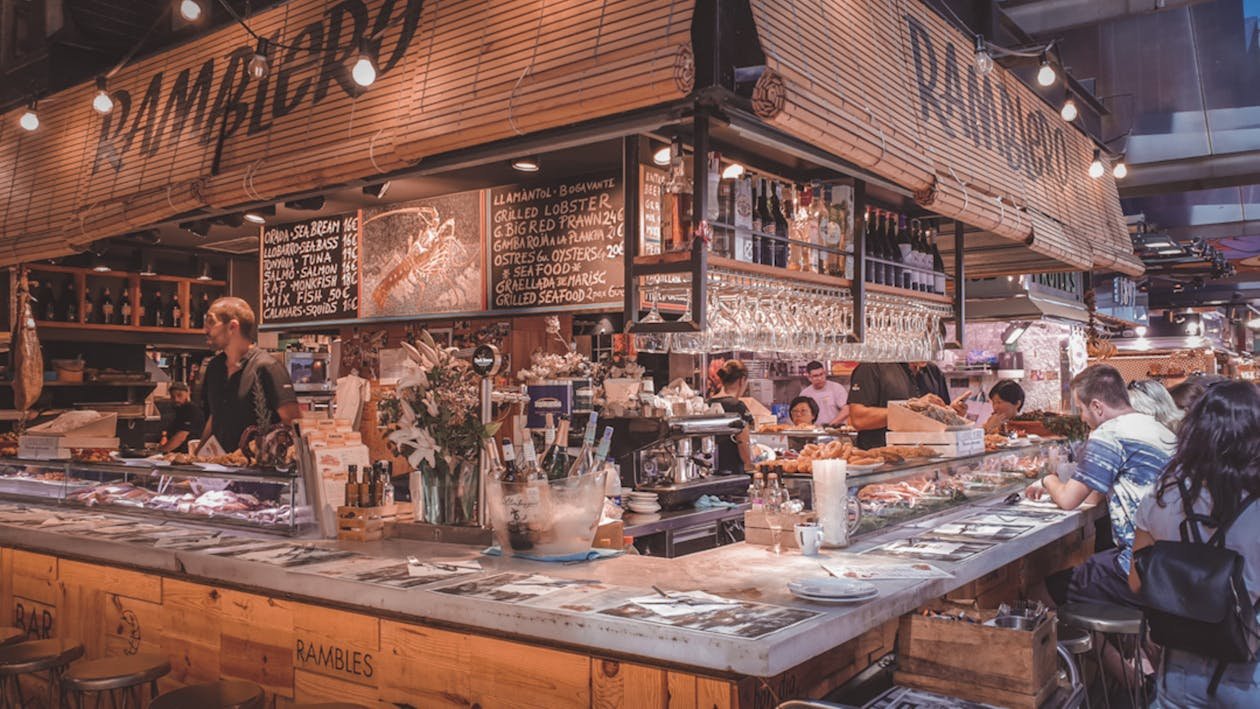
Image: Traditional vermouth service
Trencadís Mosaic Workshop – Make Your Own Piece of Gaudí
Want to do more than just look at Gaudí’s art? Make your own
- Trencadís is the famous “broken tile” mosaic style seen all over Barcelona.
- Workshops let you create a tile, tray, or frame using ceramic shards—just like the pros.
- Many studios use recycled tiles, combining sustainability with art.
Creative Bonus: You’ll leave with something way more personal than a fridge magnet.
Gohub tip? Look up studio availability and map routes on the go—some are tucked into backstreets you’ll never find offline.
Watch FC Barcelona with Locals – Not Just at Camp Nou
Football isn’t just a sport in Barcelona—it’s a shared identity. You don’t need stadium seats to feel it. Head to a local bar on match day instead:
- Neighborhood bars fill up early, buzzing with die-hard fans (and cheap beer).
- You’ll get high-fives from strangers after a goal—and side-eyes if you cheer for the wrong team
- Look for match-day menus: simple tapas, pitchers of sangria, and very loud commentary.
Cultural Deep Dive: FC Barcelona has deep roots as a symbol of Catalan pride and resistance during the Franco era. You’re not just watching football—you’re living history.
Forgot the schedule? Your Gohub eSIM is your best friend. Check live scores, find the best bar nearby, and book post-game churros without roaming charges.
Hidden Culinary Treasures in Barcelona
If you’re the kind of traveler who prefers fresh figs over fridge magnets, you’re in for a treat. While most tourists are elbowing through La Boqueria, you’ll be here—eating like a local, chatting with vendors, and tasting a side of Barcelona most visitors miss.
Here’s what not to miss if you love food + hidden gems
Mercat de Sant Antoni – The Real Deal Local Market
Forget the tourist crowds—this is where the real shopping happens.
- Fully renovated but still full of soul, Sant Antoni serves neighborhood families, not Instagrammers.
- Find fresh produce, seafood, meat, and handmade ready-to-eat dishes.
- On Sundays, check out the vintage book & collectibles market outside—it’s a tradition that’s been going strong for decades.
Foodie Tip: Stop by the central bar inside the market. Order tapas made with ingredients from the stalls—fresher and cheaper than anywhere on La Rambla.
📶 No idea what the tapa is? No problem. Use your Gohub eSIM to translate menus on the spot, no roaming fees.
Barcelona is a foodie’s dream, and if you’re heading west next, check out NYC’s best cheap eats for delicious street food finds.
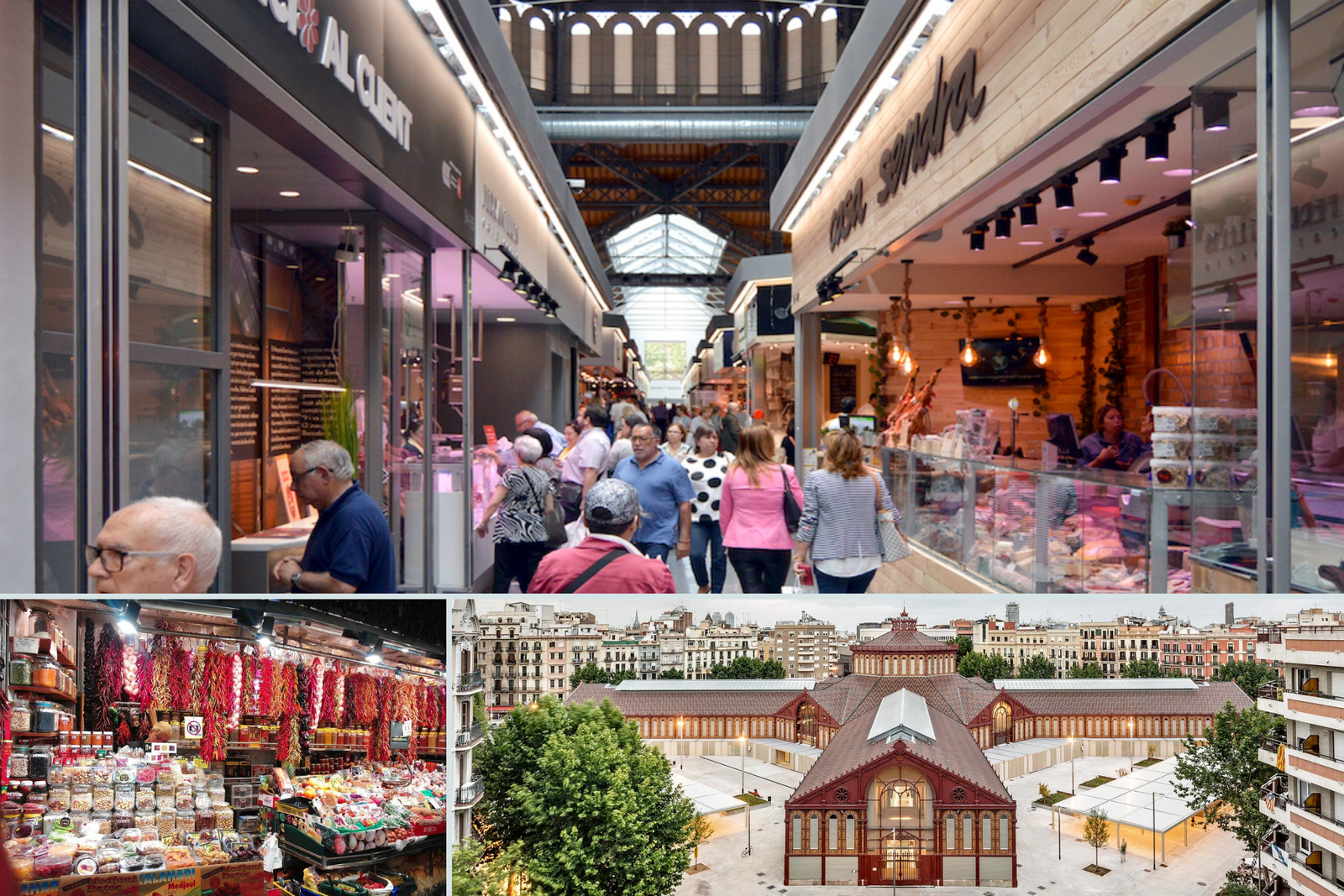
Image: Interior of Mercat de Sant Antoni
Els Encants – The Vintage Market with 700+ Years of Stories
This place is chaos, charm, and curated treasure-hunting all rolled into one.
- Look up: The mirrored canopy reflects the madness below in the coolest way.
- Dig through antiques, vintage clothes, tools, random electronics—you never know what you’ll find.
- Catch the morning auctions where vendors bid on surprise mystery lots. It’s pure, messy, wonderful Barcelona.
Strategy Tip: Go Monday, Wednesday, or Friday mornings. Come early for choice items or late for crazy-good deals.
Want to look up what that antique espresso machine is worth? Fire up your Gohub eSIM and do a quick price check on the go.
Neighborhood Bodegas – Barcelona’s Old-School Wine Ritual
Before chic wine bars and global imports, there were bodegas—simple shops where locals filled jugs straight from the barrel.
- Often unchanged for decades, these spots feel like a movie set from the 1960s.
- Order a glass of Moscatel or Manzanilla, or fill up a bottle to go (yes, BYO bottle is a thing).
- Tapas are basic: anchovies, olives, jamón—but paired with the vibe? 10/10.
Real Connection Alert: Most bodegas are run by the same families for generations. Chat with the owners if you can—it’s a beautiful way to connect with the real Barcelona.
Lost in a hidden side street? Gohub’s got your back with maps and Google Translate at your fingertips.
If you love street art in Barcelona’s El Raval, you might also enjoy exploring Berlin’s vibrant street art scene.
Practical Tips for Exploring Hidden Barcelona
Ready to dive into the less-traveled side of Barcelona? Here are some tried-and-tested tips bé learned along the way—to help you explore confidently, travel respectfully, and make the most of your off-the-beaten-path adventure.
Navigating Off-the-Beaten-Path Areas
You don’t need a tour bus to reach the good stuff. Barcelona’s public transport is super efficient and gets you to even the most tucked-away spots in this guide.
- Google Maps works perfectly with real-time metro schedules and walking routes.
- T-Mobilitat or T-Casual cards give you 10 rides on metro, buses, and trams—cheaper than buying single tickets.
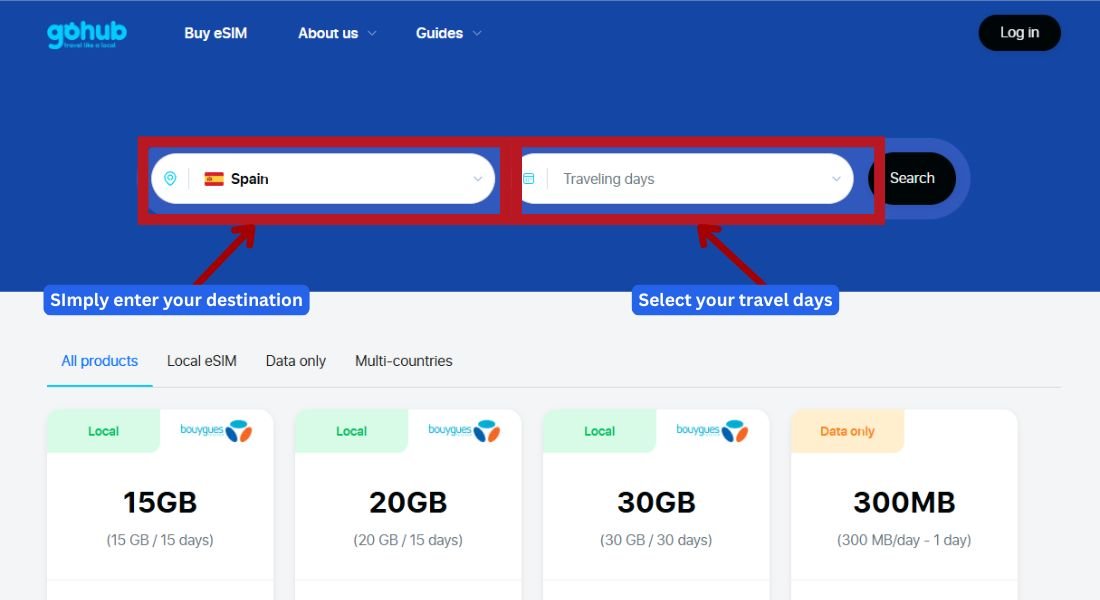
Image: Screenshot of the GoHub eSIM webpage, highlighting the destination input field with “Spain” selected, illustrating how users can easily search for eSIM data plans.
💡Connectivity Tip: Want to navigate without stress, translate menus, or check if that bodega is open on Sundays? Your Gohub eSIM gives you instant internet, no roaming fees, and coverage across all of Barcelona’s neighborhoods.
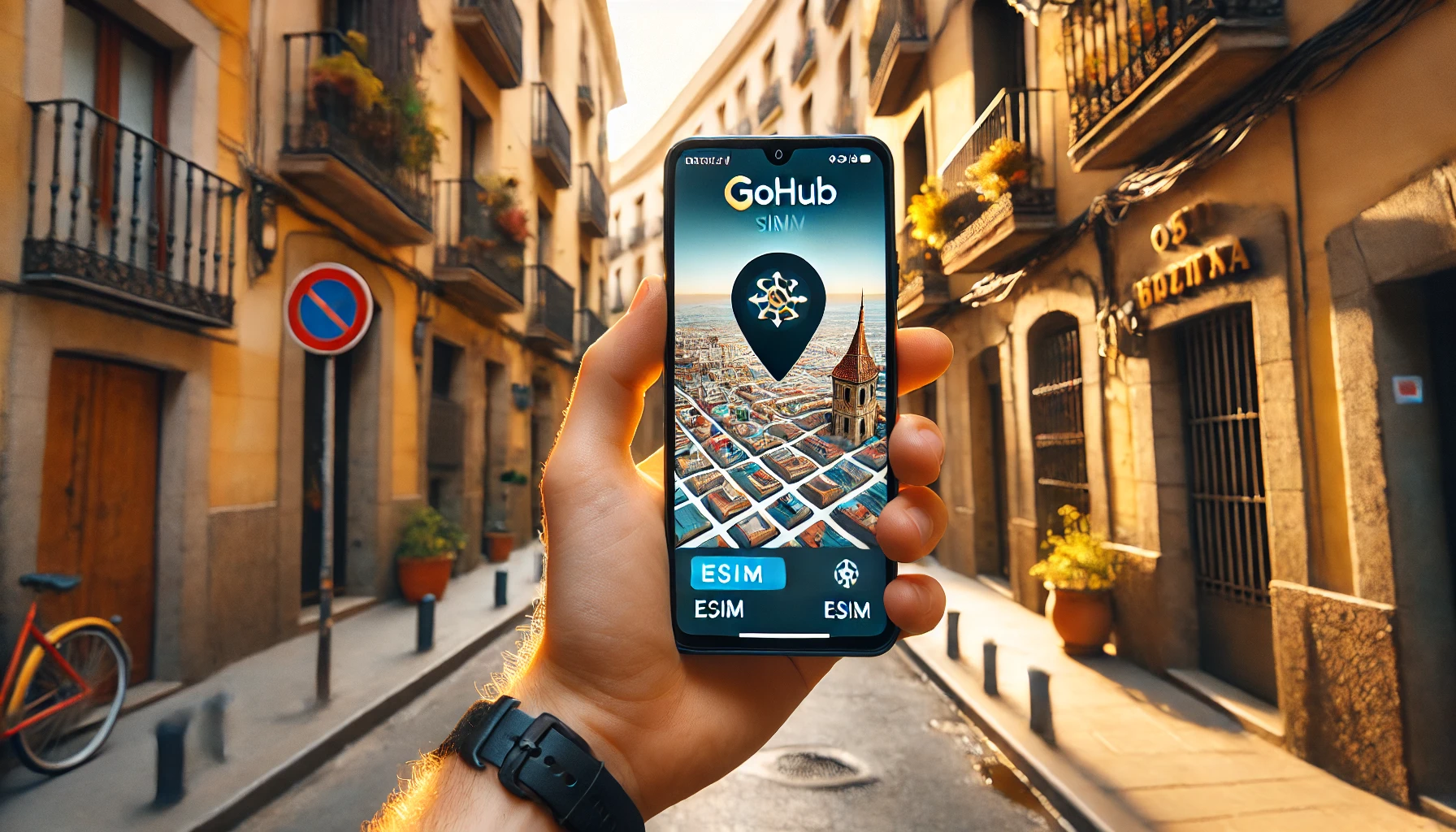
Image: Person using smartphone with Barcelona map application
When to Visit Barcelona’s Hidden Gems
Timing is everything—especially when it comes to avoiding crowds.
- Weekday mornings = peaceful strolls and empty viewpoints.
- Spring and fall are ideal: mild weather, fewer tourists, and great light for photography.
- Winter? Surprisingly great—quiet, cool, and easy to snag the best café seats.
Pro Tip: If you’re heading to Bunkers del Carmel, skip sunset (peak crowd). Go for sunrise instead. The view’s just as dreamy—and you’ll likely have it to yourself.
Respecting Local Neighborhoods
Hidden gems are often in real neighborhoods, where people live, work, and raise families. Here’s how to explore with care:
- Keep noise low in residential areas, especially early mornings and late evenings.
- Choose local cafés, shops, and bodegas over global chains—your support matters!
- Learn a few Catalan phrases like:
- “Bon dia” (Good day)
- “Gràcies” (Thank you)
Sustainable Choice: Hotels and registered guesthouses are better options than short-term rentals, which have contributed to housing shortages in local communities.
Day Trips from Barcelona That Feel Like Hidden Worlds
Barcelona is magical—but sometimes, stepping just outside the city opens up a whole new chapter of discovery. These lesser-known day trips give you big experiences without the tourist stampede.
Here are 3 underrated escapes that still feel like secrets 👇
Colònia Güell – Gaudí’s Forgotten Masterpiece
If you think you’ve seen all of Gaudí’s work in the city… surprise! Just 20 minutes away by train, Colònia Güell hides one of his boldest architectural experiments.
- Gaudí used this site to test curved forms and structural tricks later used in the Sagrada Família.
- The unfinished crypt alone is worth the trip—organic columns, stained glass, and a quiet spiritual vibe.
- Bonus: The surrounding 19th-century industrial colony tells the story of Catalonia’s textile past.
Pro Tip: Go early to explore the whole area without crowds. You’ll leave with a new appreciation for Gaudí’s genius—and none of the selfie sticks.
Use your Gohub eSIM to download the official audio guide or book tickets on the go.
Into niche cultural gems? Discover lesser-known museums in Paris that blend history with curiosity.

Image: Gaudí’s unfinished church at Colònia Güell with innovative architecture
Sant Miquel del Fai – The Montserrat You Didn’t Know Existed
If you love Montserrat but not the tour buses, this is your place.
- Built into a cliff face, this ancient monastery is surrounded by caves, waterfalls, and epic views.
- Founded in the 10th century, the site blends Romanesque architecture with raw natural beauty.
- Thanks to its elevation, it’s a cool escape in the summer months.
Travel Tip: It’s about an hour by car from Barcelona. No direct public transport—book a rental or small-group tour.
Heading into remote nature? Stay connected with Gohub eSIM—perfect for maps, weather updates, and GPS when cell signal gets spotty.
Wine Tasting in Alella: Barcelona’s Closest Wine Region
Craving a wine day without the long drive? Alella is Barcelona’s closest wine country, and it’s full of character.
- Famous for white wines from the Pansa Blanca grape, grown in sea-kissed vineyards.
- Explore the charming village of Alella: stone streets, traditional restaurants, and mountain-meets-Med views.
- Optional: Gentle hiking trails through the vines if you’re feeling adventurous before your tasting.
Wine Tip: Many wineries offer combo tours—taste local vintages while learning about Catalan winemaking heritage.
Use Gohub eSIM to find open wineries, make reservations, or call a cab back to the train station after that third glass.
Conclusion: Craft Your Own Authentic Barcelona Story
Barcelona has a way of rewarding the curious. When you wander off the tourist trail—even just a little—you’ll find yourself in places where the city’s true spirit quietly shines.
Whether you’re sipping vermut in a sleepy square, losing track of time in a mosaic workshop, or watching the sun rise from the Bunkers del Carmel, these moments connect you to Barcelona beyond the brochure.
By choosing what to do in Barcelona that most tourists miss, you’re not just seeing sights—you’re living stories. The kind you’ll still talk about long after your flight home.
And through it all, your Gohub eSIM has your back—keeping you online to:
- Navigate tucked-away neighborhoods with ease
- Translate menus and museum blurbs on the fly
- Share your hidden discoveries with friends before the moment fades
No roaming. No stress. Just smooth, seamless exploring.
So… which hidden gem will you discover first?
Let us know in the comments—your tip could help another traveler find their next favorite memory in Barcelona.
Barcelona is best explored connected — grab a Europe travel eSIM or international eSIM to stay online with maps and bookings.








